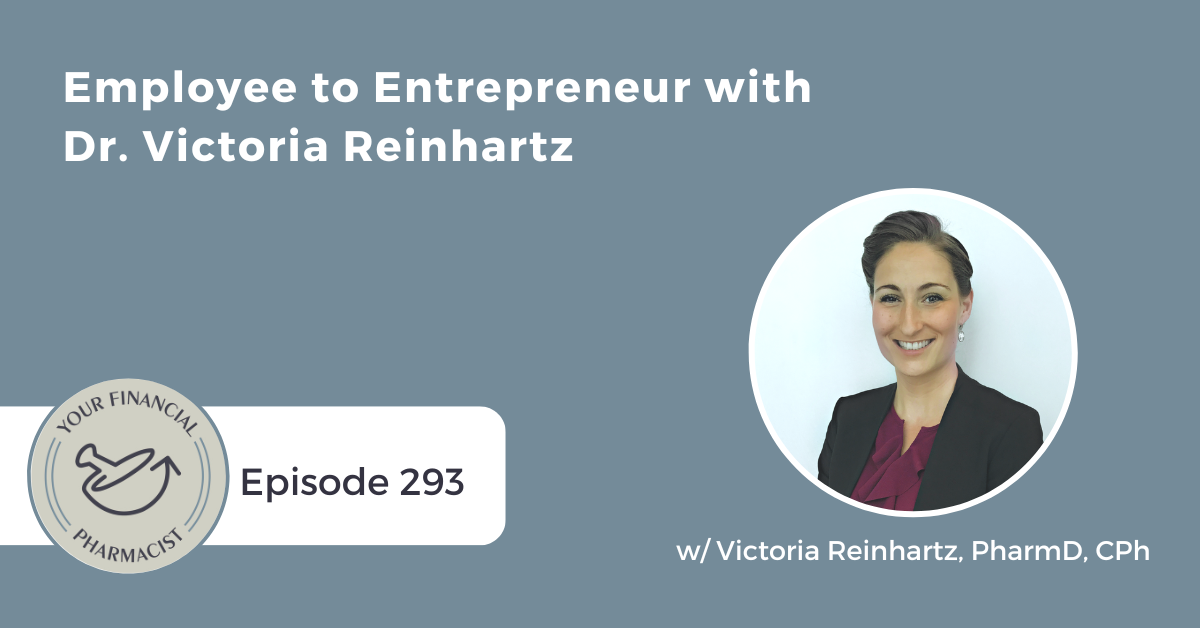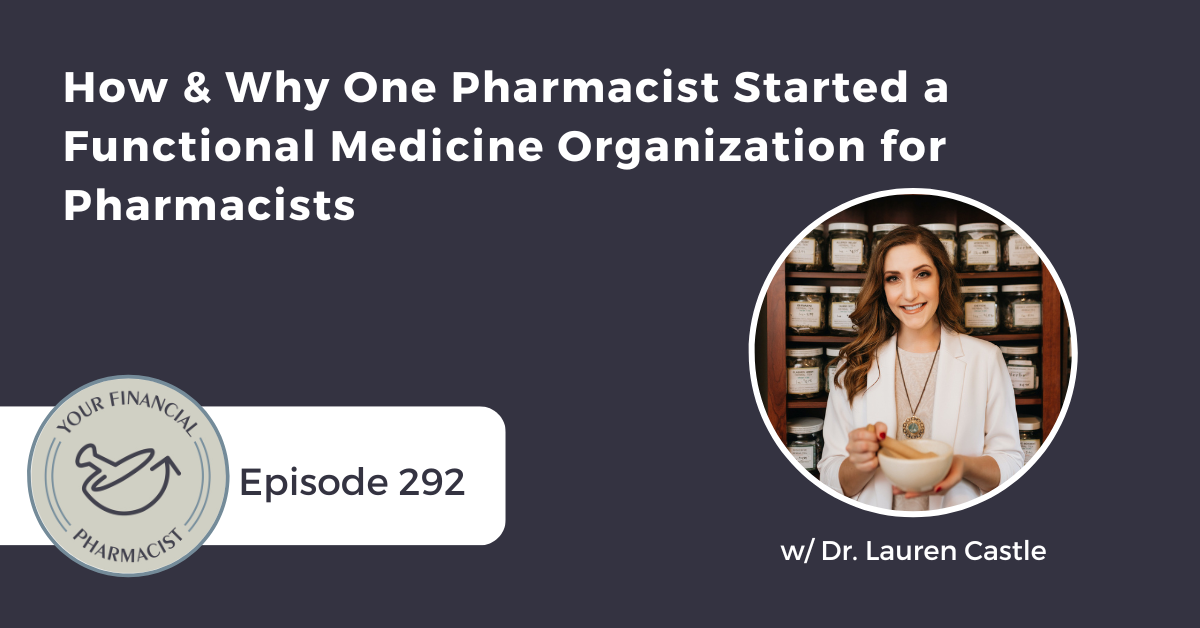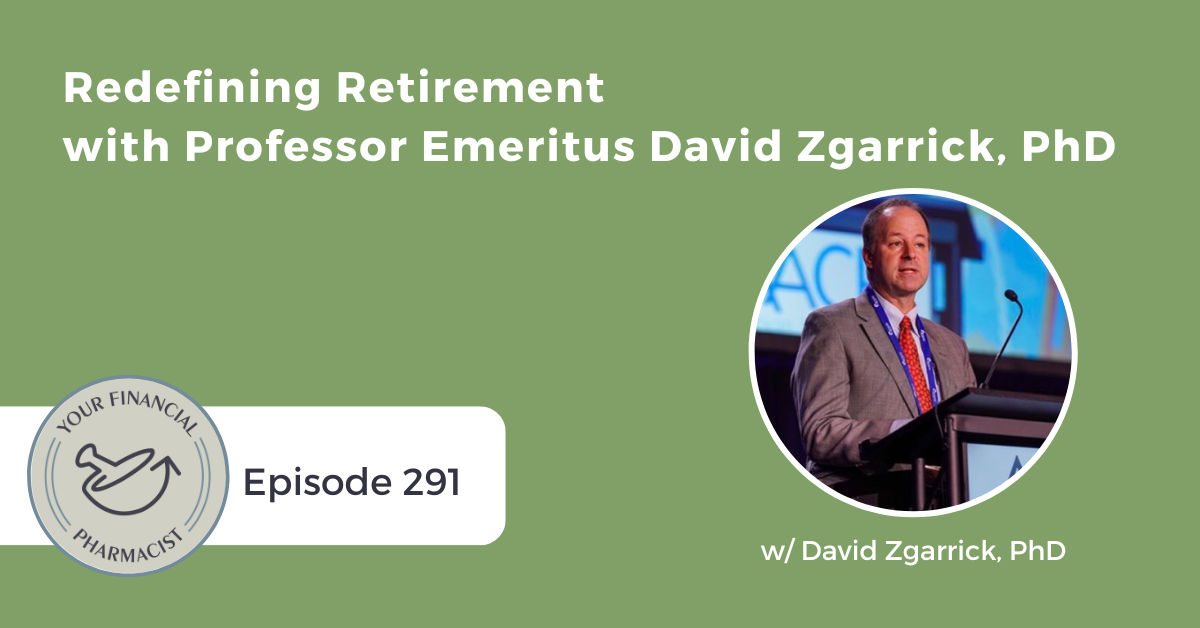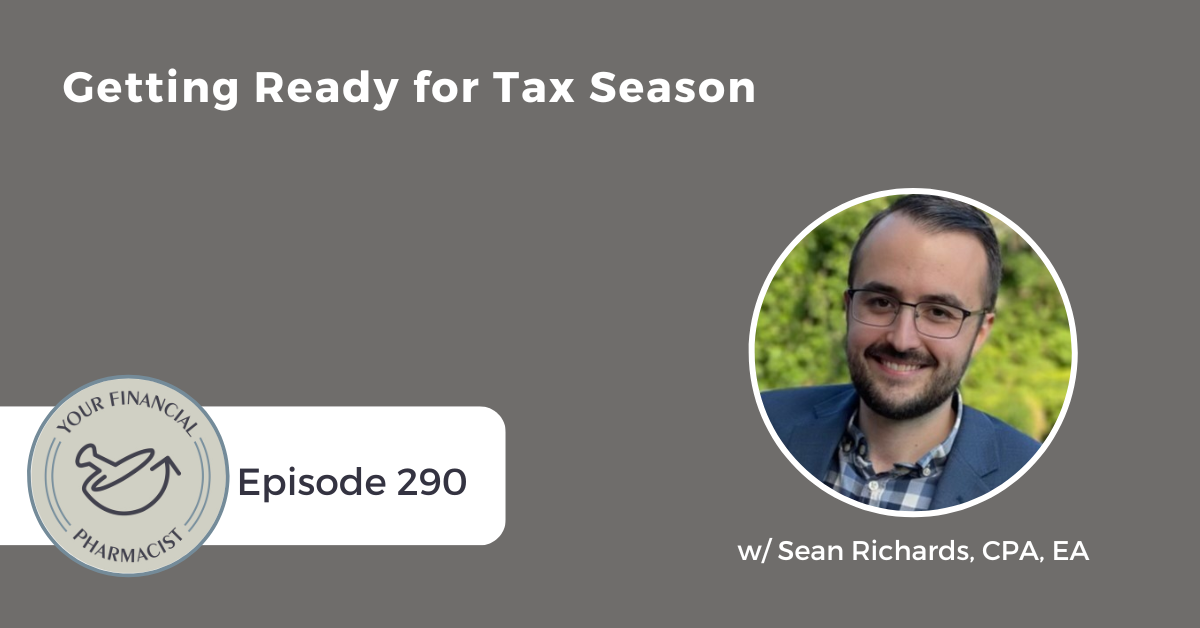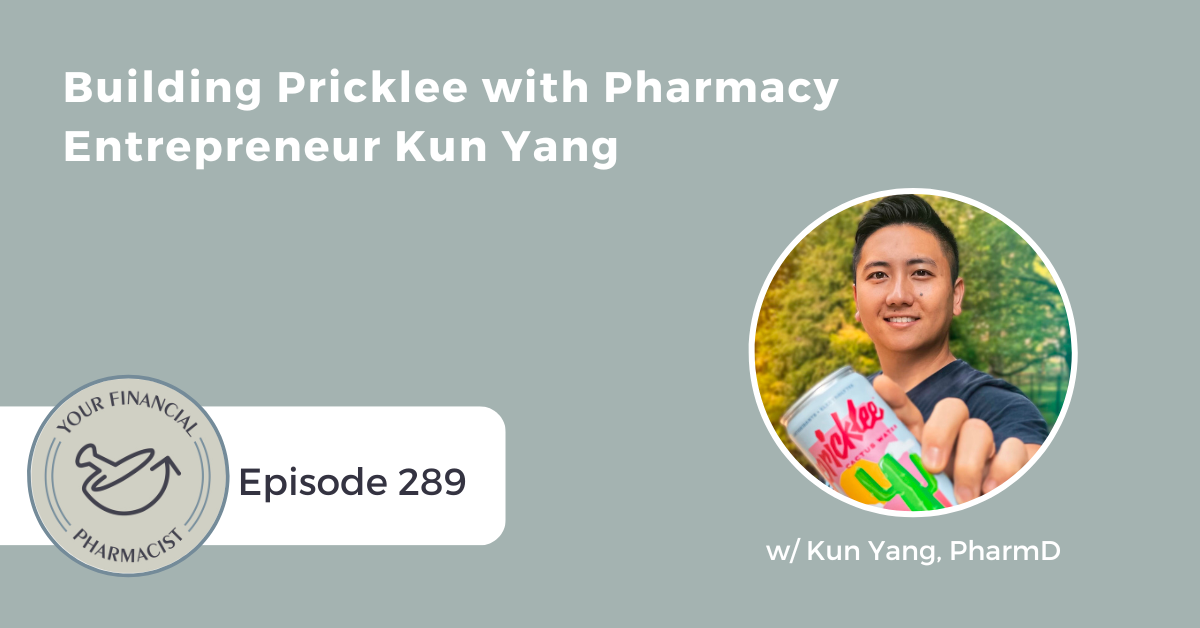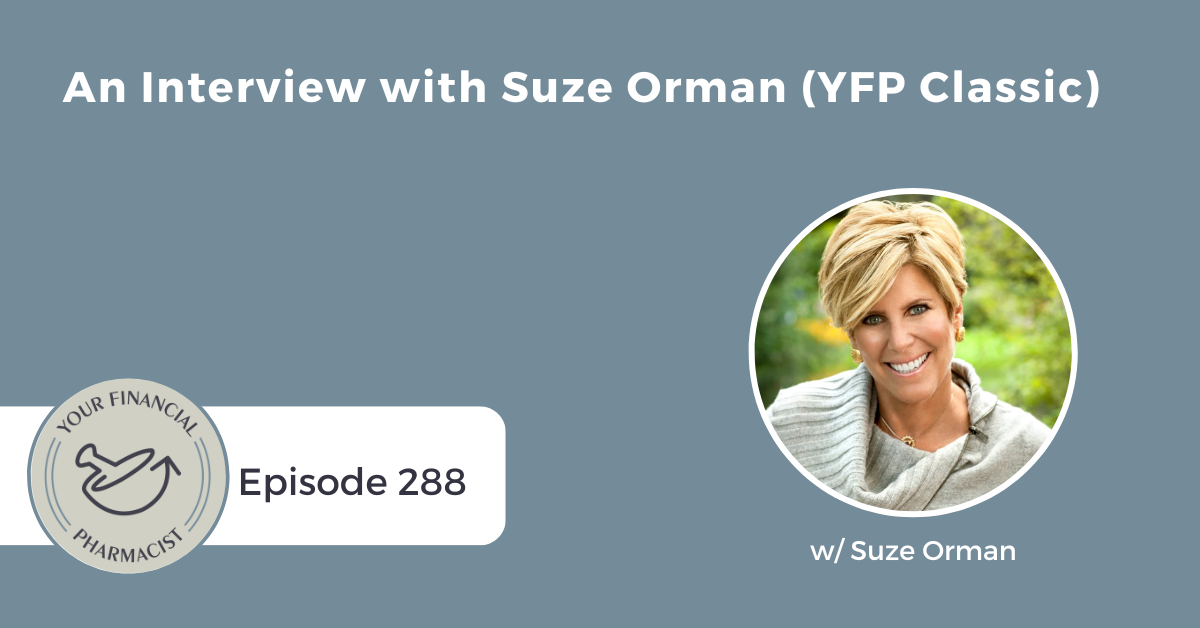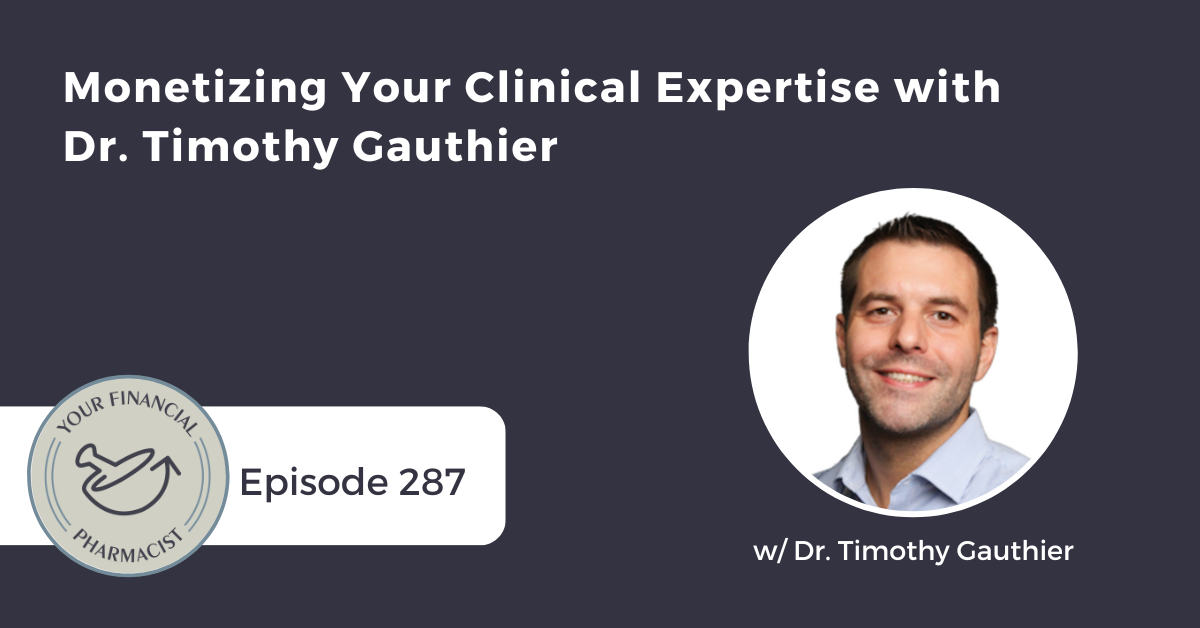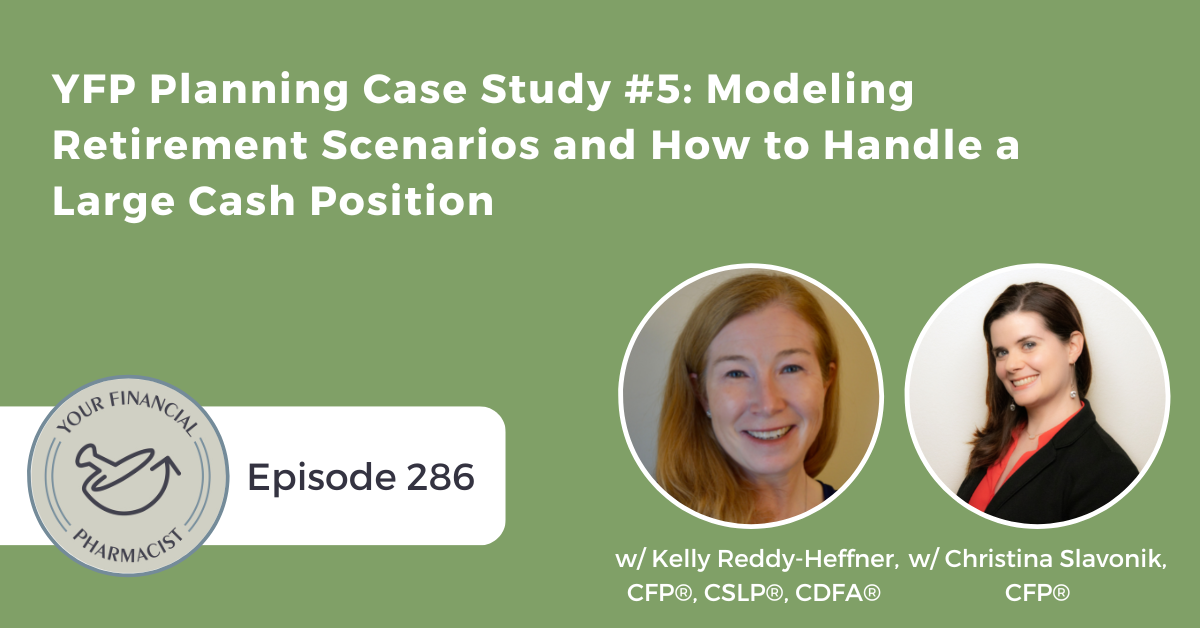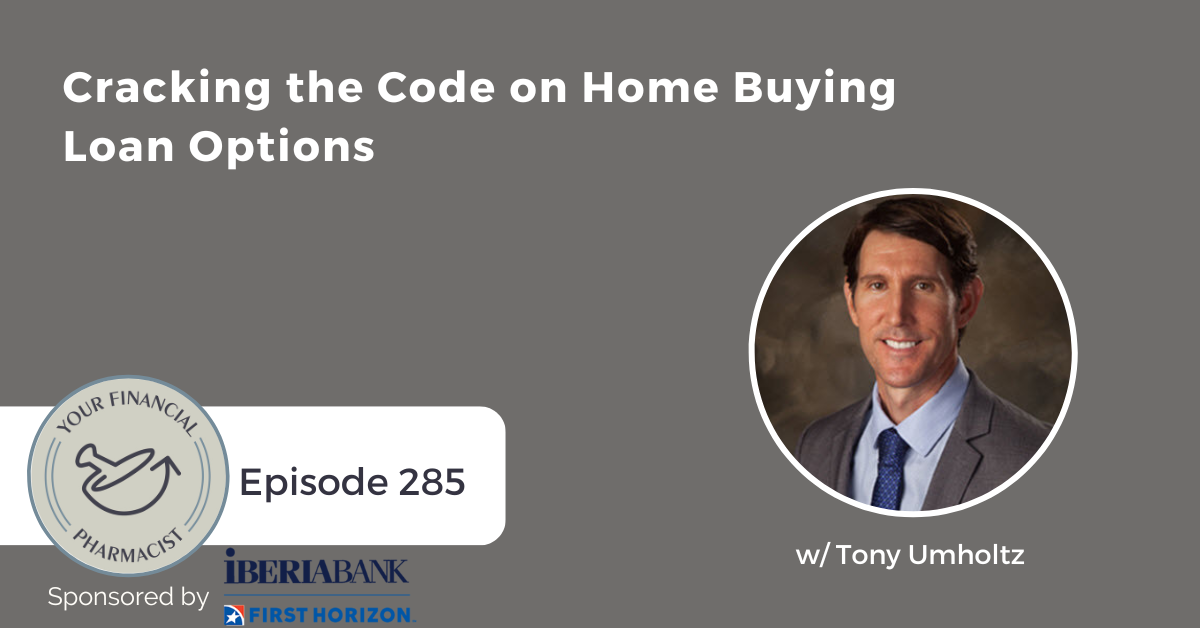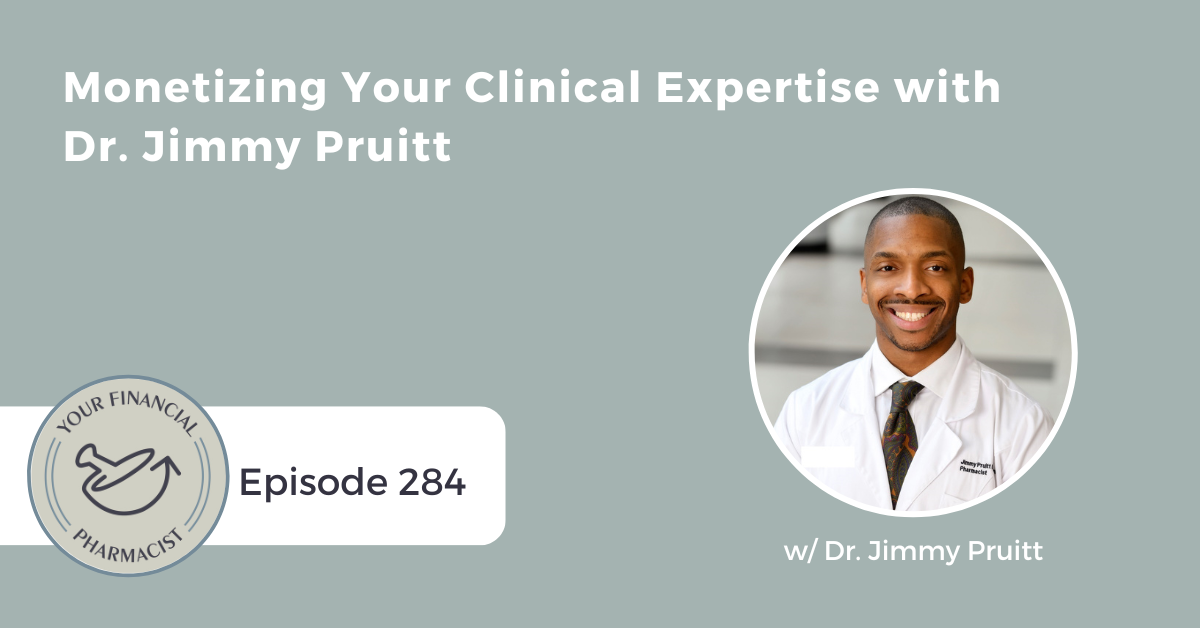Dr. Victoria Reinhartz, CEO of Mobile Health Consultants, a business founded to solve the access to care problem by empowering interprofessional Mobile Integrated Health and Community Paramedicine teams, discusses her motivation for building Mobile Health Consultants, the target audience and how this has evolved, how she overcame the initial hurdles of starting a business, and how she balances running a business while working in an academic position.
About Today’s Guest
Dr. Victoria Reinhartz is an industry leader in Emergency Medical Services, where she established the first-ever paramedic-pharmacist partnership to address chronic disease and medication challenges for underserved populations. She is the Chief Executive Officer of Mobile Health Consultants, a business founded to solve the access to care problem by empowering interprofessional Mobile Integrated Health and Community Paramedicine teams. Dr. Reinhartz is a national advocate for innovative models of care, and she serves on the Board of Directors for the National Association of Mobile Integrated Health Providers, an organization advocating for mobile interprofessional teams as the nation’s care solution. She also serves as the Mobile Integrated Health subject matter expert for the Commission on Accreditation of Medical Transport Systems.
For her leadership and exceptional care provision within Emergency Medical Services and Mobile Integrated Health, Dr. Reinhartz has been recognized with a Chief’s Commendation Award, a Congressional EMS Unit Citation Award, and national attention from the United States Public Health Service.
Her national advocacy for pharmacists as part of mobile health teams has resulted in Dr. Reinhartz being named a 2021 Top 50 Most Influential Leader in Pharmacy. She was also selected as the 2020 Next Generation Civic Leader, an honor awarded to one pharmacist nationwide whose vision for interprofessional care best spotlights the needs of underserved communities.
Episode Summary
This week on the YFP Podcast, YFP Co-Founder & CEO, Tim Ulbrich, PharmD, talks with Dr. Victoria Reinhartz, CEO of Mobile Health Consultants, about her journey from employer to entrepreneur. During their discussion, listeners will learn about the motivation and inspiration behind the genesis of Mobile Health Consultants, the target audience and offerings, how they’ve evolved, and how Victoria conquered the initial hurdles of starting her business. Highlights from the episode include a discussion of Victoria’s start in pharmacy and how a standout moment in her career highlighted the teaching abilities that she thought she might never use as a pharmacist, how Victoria discovered her passion for community paramedicine and mobile integrated healthcare, and how she moved her idea for Mobile Health Consultants from an idea to a business.
Tim and Victoria discuss the path from employee to entrepreneur, the value of professional coaching and small business development centers, and how as a CEO, time distribution can fluctuate when managing competing responsibilities and onboarding teammates. Victoria shares practical tips and tricks on managing and running a business while also working in academia, how her presence in the front office and the back office have evolved as needed, and strategies she has used to grow her team.
Links Mentioned in Today’s Episode
- Mobile Health Consultants
- YFP Planning: Financial Planning for Pharmacists
- Schedule a free Discovery Call with YFP Planning
- Connect with Victoria Reinhartz on LinkedIn
- The Happy PharmD
- U.S. Small Business Administration: Small Business Development Centers
- YFP 266: How One Pharmacy Entrepreneur Started a Keto-Based Medical Practice
- Ycombinator: What’s the Second Job of a Startup CEO?
- Watch Reinhartz Rundown on YouTube
- Connect with Victoria Reinhartz on Facebook
- Your Financial Pharmacist Disclaimer and Disclosures
Episode Transcript
[INTRODUCTION]
[00:00:00] TU: Hey, everybody. Tim Ulbrich here, and thank you for listening to the YFP Podcast, where each week we strive to inspire and encourage you on your path towards achieving financial freedom.
This week, I had the pleasure of talking with Dr. Victoria Reinhartz, CEO of Mobile Health Consultants, a business founded to solve the access to care problem by empowering interprofessional mobile integrated health and community paramedicine teams. During the show, we discuss the why behind building Mobile Health Consultants, the target audience and offering and how this has evolved over time, how Victoria was able to get over the initial hurdles of starting the business, and how she balances her time running a growing business, while also working part time in an academic position.
Now, before we jump into the show, I recognize that many listeners may not be aware of what the team at YFP Planning does in working one-on-one with more than 250 households in 40-plus states. YFP Planning offers fee-only high-touch financial planning that is customized to the pharmacy professional. If you’re interested in learning more about how working one-on-one with a certified financial planner may help you achieve your financial goals, you can book a free discovery call at yfpplanning.com. Whether or not YFP Planning’s financial planning services are a good fit for you, know that we appreciate your support of this podcast and our mission to help pharmacists achieve financial freedom.
Okay, let’s jump into my interview with Dr. Victoria Reinhartz.
[INTERVIEW]
[00:01:22] TU: Victoria, welcome to the show.
[00:01:24] VR: Oh, thanks for having me, Tim. This has been a long time coming, so I’m glad we’re able to put it together.
[00:01:29] TU: It has. We crossed paths this past year through the pharmacy entrepreneur circles. After I learned a little bit more about your career path and the work that you’re doing with Mobile Health Consultants, I knew we had to bring you on the show to share a little bit about your entrepreneurial journey, what was the genesis of the idea, what is the work that you’re doing. We know that we have many pharmacists in our community that are itching with an idea or a side hustle or a business that they’re working on and excited to feature other pharmacy entrepreneurs such as yourself.
So let’s start with your background in pharmacy. What drew you into the profession? Where did you go to school, and what was the first position that you had after graduation?
[00:02:07] VR: I decided to become a pharmacist because I am kind of a nerd at heart. I really enjoy a good puzzle, so to speak. I think that every patient and the best drug therapy for them is really a puzzle for us to figure out and navigate through the various challenges related to genomics and treatment course and side effects, etc.
So the nerd at heart in me, I love putting together puzzles, and I ended up going to pharmacy school at LECOM School of Pharmacy and graduated, I guess, now over 10 years ago, which feels crazy, right? We no longer qualify as new practitioners too.
[00:02:45] TU: We don’t.
[00:02:47] VR: But that’s alright. So graduated from LECOM School of Pharmacy down in Bradenton, Florida area and stayed in Florida to practice more in the community setting. But I was fortunate enough to continue to take on leadership roles and new opportunities to develop skills within myself, which really is what led to a lot of the opportunities and academia and public health and now mobile integrated health that I’m involved in.
[00:03:16] TU: So one thing, Victoria, I read that you shared on LinkedIn was a story from your last year of pharmacy school, when you did an educational training session, I would assume, during an experiential rotation for a nursing staff at a hospital. Through that experience, you realized the love that you have for teaching and problem solving. Tell us more about that experience, and how did it influence some of the career path and directions that you’ve taken today?
[00:03:44] VR: Yeah. So the story that I have on LinkedIn is a true one, and it is something that I feel still happens to this day. So I come from a super blue-collar family. We cuss a little bit in our family. I don’t know. Any of pharmacists listening, if you have families that that cuss a little bit, my family is super blue-collar, and I had been practicing like how to say glomerulus. I was so nervous about this presentation that I was going to do to an inpatient nursing staff.
After the presentation, a preceptor pulled me aside and wanted to have a serious talk with me, and she was kind of had that serious face on, and I said, “My goodness, I’ve cursed in the middle of the presentation, right? I let a four-letter word slip somewhere on accident.” But she wanted to have a serious talk with me about my future and about whether I had considered teaching.
Like many of the entrepreneurs that you bring on the podcast here, I thought that when I did decide not to do a residency that I had closed the door on any opportunity to teach. I was candid about that that, no, I decided not to do a residency. So I don’t think I would be allowed to teach anywhere. She really encouraged me to pursue opportunities where I got to develop that skill set of teaching.
So when I graduated and took a role in community pharmacy, I started figuring out how do I gain teaching skills. So I started to bring in new pharmacists, to train them. I started doing teaching events with our local pharmacy school and in local college of medicine. I started taking on more initiative on the district level to figure out how can I develop the skill set that I need to become a faculty or a professor.
Really, that professor had a huge impact on my life, that preceptor. It was secondary to her taking a minute and saying, “I think that you should develop this,” that prompted a lot of the steps that I took to continue to develop myself. So once I had kind of launched some of those things where I felt more comfortable in teaching, I had been engaging in teaching concepts for a while now, I took the opportunity to apply for a faculty position. I did accept that faculty role in 2015 with LECOM.
But I knew that I wanted to really stay involved in clinical practice as a younger practitioner. So I started working in the public health department and doing tuberculosis management and women’s health and immunizations and things like that. I was brought in to kind of help the Department of Health figure out a solution for our access to care problem. We started brainstorming. Really, this is where I found the passion for what we call community paramedicine and mobile integrated health care.
Like a lot of pharmacists, I think when we start to do a side hustle or when we step out to become an entrepreneur, it’s often born out of a problem that we’ve identified in practice that we feel passionate about or something that is just like lights our soul on fire, right? Like something that brings out that, “I want to do this. I’m excited to do this. This lights me up, and it keeps me up at night.”
So this was kind of a blend of those things, as there was a big problem. As we know, in all of our communities, we have a huge number of patients or underserved populations that are not able to navigate the healthcare system, right? So they don’t have primary care. They’re uninsured or underinsured. They don’t speak English and can’t navigate even getting established with a primary care. So what this leads to is we have these patients utilizing the 911 call system and emergency rooms as their primary care, right?
So definitely something that we all see in our communities, we know that health outcomes suffer. We know that cost, it gets expensive. So I said, “Well, why don’t we do a pilot? Why don’t we launch a pharmacist and a paramedic side by side into patient homes on a proactive basis, so not when the 911 call comes?” But paramedics know who in their community needs the support.
[00:08:30] TU: That’s right.
[00:08:30] VR: They know who’s calling 911 all the time. They know when Mr. Jones calls for the fourth time that they’re going to be back next week. So they know who to see. We launched a pilot with a pharmacist and a paramedic side by side together, going into the homes proactively for these patients that did not have the resources they needed, and we were able to see a huge impact in reducing the overall cost of care, but also improving the health outcomes.
That is now how my entire consulting business is founded in the mission of empowering these paramedicine teams with the training and resources they need to improve access to care.
[00:09:15] TU: I love that, and I want to come back and dig into more of what you’re working on with the consulting business and how it’s grown over time, the vision you have for it going forward. I want to make sure we don’t gloss over, though, some really important parts of the story you shared on that rotation and that experience, and one being great mentorship, right?
All of us have the opportunity to interact with other pharmacy professionals. Perhaps we precept students as well, and we never know the impact that some of those words of encouragement are just seeing a skill set or a passion in someone and either affirming them in that skill set, encouraging them in that as well, the impact that that may have long term. So it’s just such a great example of that.
Then another key piece that I really heard in that story was initiative, right? So one of the mindsets that can be out there is, “Hey, I can’t get X, Y, or Z job,” in the case here, you’re talking about a faculty position teaching, “Because I might not have,” insert whatever. Residency training, board certification, whatever credential. That’s one mindset.
The other mindset is like, “I’m going to figure it out. I’m going to figure it out because I have a passion for teaching. I have an interest in it. Somebody else has affirmed that skill. And I’m going to kind of blaze that pathway, and I’m going to take initiative in building relationships, collaborations, and getting opportunities that I can then go and make a case for why I can provide value in this teaching role.”
What’s really interesting, Victoria, is you are doing teaching in somewhat of a traditional format, obviously, in a faculty type of role or position. But you’re also teaching every day in the work that you’re doing through your business. I think one of things we got to be careful about is if we have a gift or a passion in a certain area, but we feel like we may not be able to do that because it’s defined a certain way by an employer or in a certain career path, it doesn’t mean we can’t do that, right?
You can teach. I can teach. I’m not in a formal academic role anymore. But I’m teaching every day on personal finance. It’s a different method of delivering that information, but it doesn’t necessarily have to be defined in the way that we may think that it has to be with a certain step or credential or degree or pathway to be able to do that. So I love that story and that journey. I think that’s so powerful.
So when it comes to Mobile Health Consultants, so you talked a little bit about the pilot project, the initiative, really the problem and the opportunity that you saw, that you’re able to solve. Tell us more about the step from idea to actually beginning to implement that business, right? It’s one thing to identify a problem that needs to be solved or an opportunity that can be addressed, and you could have continued to do that through collaborations and partnerships with existing entities, while you’re employed in other positions.
But it’s another thing to really take a problem and then develop a solution through creating a business. In here, we’re, obviously, talking about the consulting work that you’re doing. So tell us about the early stages and how you were able to initiate and get started with developing the business.
[00:12:11] VR: Well, I have to say that we do not do a good job in pharmacy of teaching or creating skill sets around entrepreneurship, in general, I would say.
[00:12:22] TU: Amen.
[00:12:25] VR: I know that you and I have gone back and forth about this issue over the last few years, and so many others that are out there creating side hustles for themselves, creating small businesses and solutions in the healthcare industry and outside of the healthcare industry also feel that way. But I was in that boat. I felt – I knew a little bit from managing a pharmacy or being involved in pharmacy management. But when you talk about entrepreneurship and establishing a small business, that’s not enough. It’s not even close to enough, right?
I did find it difficult in the beginning. I still find it difficult every day because so many pharmacists are kind of inherently intelligent, and they’re kind of good at things that they do and can figure things out really easily. Some of us, maybe you didn’t even have to study that hard for some of your undergrad courses and things. I think that that was a big challenge for me in the beginning was struggling, like struggling and navigating. How do I do this? What are the laws and regulations? How do I draft contracts? How do I set my hourly rates? All of those pieces have to be figured out?
I had a lot of success with, first of all, finding coaches. So for anybody on this podcast, and Alex and Jackie Boyle and the team from Happy PharmD have not asked me to discuss this or mention it or anything, but I did actually go through the Happy PharmD processes for prioritizing myself and my own goals and figuring out what do I need to do to make this happen. It’s living in my heart. But like so many of us that are parents and spouses and professionals, our own personal passions tend to take a backseat to all the other things that we have to do, right?
So I did pursue some coaching with Happy PharmD to create a series of deliverables for my own goals that I knew would set me on the path to getting established. I also found the Small Business Development Center or the SBDC to be really valuable. I will tell you, I still meet with them, with my SBDC rep like, I don’t know, every other month or every few weeks, if I need to, if an issue comes up and I’m like, “I have no idea how to handle this,” or, “Can you help me find someone in the area that is a trustworthy source and this expertise area?” So you have to ask for help. For a lot of these things, you have to be willing to kind of put up the money, if that’s what it takes.
[00:15:09] TU: Yeah. I’m glad you mentioned the SBDC. I’ve talked to several pharmacy entrepreneurs or those that are building something, just in the last couple of weeks, and that was one of the resources I pointed them. Hey, have you talked to the SBDC in your area? Because it’s – Even the technical stuff, some of that might be helpful. Some of it maybe you’ve already kind of gone down that path, putting together business plans, LLC formations, things like that.
But it’s about beginning to be a part of that network and community, where someone might say, “Hey, have you talked to so-and-so? Or what about this? What about that?” I think it’s just helpful to know you’ve got someone else in your corner to bounce ideas and questions off of as you’re developing. It’s such a great free resource that’s offered all across the country. We’ll link to that in the show notes, so folks can find SBDC office in their area as well. Then you mentioned the impact of coaching that can be there as well.
Let me ask a follow up, though, Victoria. Even with coaching, right? Even with coaching, even with putting up the dollars, there’s still a step of getting over the fear, right? The fear of, “Man, is this going to be successful? What if I mess up a contract? Who am I to kind of put myself out there of this expert in this area across the country?” There’s all what I like to call the head trash that might get in the way of us being able to actually move something forward. Coaching can help that. Don’t get me wrong. But at the end of the day, like we’ve got to be able to be comfortable taking some risks to move something forward.
So for your journey, was that a thing? Was that a part of the journey? Then how were you able to get past that to be able to take those first early steps of the business?
[00:16:38] VR: I think regarding the headspace, I think it’s not really a thing where you can say, “Oh, I don’t think I’m in the right mindset, or I’m being too hard on myself. So I’m going to do this tomorrow, and then that fixes the problem.” It’s an ongoing, continuous daily effort because every step of the process is going to be a learning lesson for you. So whether you’re earning your first dollar or your 100,000th dollar or your millionth dollar, each of those phases of growth creates a new element of imposter syndrome, right? Or a new element where you’re not sure am I ready for this level of the game, right?
So it’s an ongoing thing, and I just want everyone to know that and give themselves some grace. I think that giving myself grace was a huge part of how I continued to be in the right mindset and how I approached it early on as well. You’re going to make mistakes. You’re going to have to reach out for partners or resources because you don’t know how to do something, and you have to figure it out. You just have to be comfortable saying, “I don’t know. I need support,” and give yourself the grace to be able to do that. I think that was a big one for me, right? We’re a lot of times our own harshest critic, and so getting comfortable in that.
Then I think the other thing that I would say is, financially, it does take some preparation, potentially, depending on how comfortable you are with risk, with financial risk. I know that we, my spouse and I, had to put together a plan of what’s the dollar amount that we’re going to invest in here, and what’s the timeframe before we are going to count on a salary coming in for you that we feel comfortable with. So essentially, what’s the span of months, or even years maybe it might be for some people, until we say, “Okay, enough is enough. We did it, and we were not successful, and we need to kind of go back to a real world job, so to speak.”
So anything that you can do by saving ahead of time, making changes in the budget, putting money aside to reduce the amount of risks that you have or increasing your comfort level with the risk that you’re taking is valuable.
[00:19:12] TU: I’m so glad you mentioned that, Victoria, because I think there’s a lot of – I use the word over glorification of this idea of like just jump and figure it out. There can be value in like making some mistakes and learning along the way. But there’s also some wisdom in having a game plan and having some backup and options, especially when we’re talking about the financial aspects of the personal side. Of course, there’s a connection to that of the business side.
What we want to prevent is that we’re not able to pursue our business with the full attention that it needs and deserves because we’re worried about the risks on the personal financial side of things. Everyone has a different capacity and tolerance for risk, right? Everyone’s personal situation, of course, is very, very different. But doing that work, as you mentioned, to determine what is the runway that it’s going to take reminds me of –
We had Jodi Nishida on episode 266, I’ll link to that in the show notes, who has started a keto-based practice out in Hawaii, doing some really cool things. She talked about this for her journey of having a substantial amount of savings that she ended up having to lean on early in her journey because of some challenges that happened that maybe she could have predicted, maybe she could not have. But if it weren’t for having some of those reserves, it might have crippled her moving forward with the business. Potentially, without that, she might have felt the need to jump back into the work that she was doing previously.
So a ton of wisdom there, I think, that you’re sharing in terms of making sure that we have the financial plan and preparation, so we can approach the business with the confidence that it does deserve. So Mobile Health Consultants, I’m going to read your mission statement. Empowering mobile integrated health and community paramedicine teams in all 50 states with exceptional training and disease management expertise. So you painted the picture of kind of how it came to be and the problem you’re trying to solve. Tell us more about the target clients, the services that you offer today. Then we can also talk about kind of what you’re planning into the future.
[00:21:12] VR: Yeah. So I think one of the exciting things about being an entrepreneur is that you get to kind of follow your heart, and you get to really live the concept of success occurs when preparation meets opportunity, right? I started out just offering consulting services and some speaking services. That would be anything from coming in and doing a program evaluation, so for these programs that are already in existence, so coming in and doing a multifaceted evaluation to look for operational efficiencies, clinical appropriateness of their programs.
That ended up expanding to helping teams launch programs. So if they are recognizing there’s a high number of 911 calls secondary to injury in their area or frequent falls, then they might want to put together a false program. But maybe they don’t want to navigate all the challenges of which home safety assessment is best, which falls assessment tool is best, how do we deal with the meds that are going to contribute to falls. So I began going in and helping teams navigate that. How do you figure that out? What’s the best practice in the industry? What should you track for monitoring your effectiveness? So that kind of expanded to helping launch new programs and establish both clinical and operational efficiencies.
It has kind of expanded from there. So now, I work with teams that are getting set up with payers for establishing what metrics to track and how to quantify their effectiveness from a value-based care standpoint and reduce the overall cost of care for patients. That might be Medicare or Medicaid patients. We also do consulting for technology companies and healthcare service provider companies.
So as they are expanding markets that intersect with mobilized healthcare professionals, which we saw a huge boom of that via telehealth and community-based care programs as part of the pandemic, as technologies grow to recognize the value of mobilizing teams into the communities, there is a huge need to modify their technology systems. So we also have an end user design type consulting service that we provide, where we give insight to these teams and the companies that are developing the necessary technology.
[00:23:49] TU: I love it. We’ll link to the website in the show notes, so folks can get a feel for services and offering and educational programs. I think you’ve done a great job of laying that out on the website. One of my questions for you, Victoria, as I hear you talking about the evolution of the services is that – I think any early entrepreneur kind of goes through this phase of coming up with the content and the product, doing a little bit of business development and marketing.
I’m also, obviously, kind of a key relationship developer with partners. I’m trying to manage the finances a bit, wearing all these hats at once. So as I hear what you’re doing, and we’ll talk about how you balance this with other responsibilities that you have as well, like how would you estimate or breakdown your time in terms of where you’re spending and actually delivering the products and services, and where you’re in more of the backstage of the business, whether that’s in developing new relationships, partnerships, business development, marketing, brand awareness promotion? Like how do you distribute your time and how has that evolved over time?
[00:24:50] VR: It has evolved. It also waxes and wanes, to be honest with you. So as I pick up new projects with clients, then for a period bit of time, we’ll kind of go intensely more towards one area of the business or another. Some examples of that include the fact that if I have a really intense four-month project that involves consulting and user design and technology development and things, then we will shift, and we might do 60 to 80 percent on the consulting side, as far as hours commitment for that period.
On the flip side, on the education platform that we do, which is providing mobile integrated health care and community paramedicine providers, so this is paramedics, but this can be social workers. This can be nurses, any healthcare profession really. As they are looking to grow their skill sets, get into this industry, look for future employment opportunities in this industry, we have a rolling educational side.
For example, we have a community paramedicine accelerators course that launches our next cohort in January. So when January comes, for a couple months there, January through March, we’ll kind of pick up on the education piece because multiple times per week, I’ll be logging on live and doing case working and practice questions and live teachings and active discussions with paramedics across the country. So it does wax and wane, depending on the season, which is also fun because it keeps it not boring, right?
But in general, I would say about 60% or so of the business is consulting-related right now or over the last year or so. Then probably the speaking and education side is about 30% or so. The remaining 10% is really related to advocacy involvement at a high level nationally within the industry and internationally. Then also, we do have things that come up that are a little bit unexpected sometimes. So one of our core values is we get it done, plus some. We really believe in going kind of above and beyond and over delivering whenever that’s possible. So we’ve had multiple clients over the last two years that have asked for social media, graphic design, newsletter and content development. That has been an aspect of the business that I did not originally anticipate, and that I have actually contracted out and brought in new resources and things to help develop that.
So now, that is a growing area that we’re going to see over the next few years if we keep it or not, but it’s bringing in revenue. So it’s another way that we can over deliver to clients. That’s probably, I guess – Things like that are the other 10%.
[00:27:55] TU: Yeah. You’ve said we several times now throughout the show. So one of the questions I really like to dig deep on and better understand because I think it’s such an important evolution of the business when you go from solopreneur to having other people that are contributing, and that could be W team to employees. It could be contractors. It could be fractional services in terms of kind of piecing the team together. It can look very different. But how have you constructed the team, as you talk about we, and what are those different roles where you have some help in the business?
[00:28:29] VR: We are in a period of growth, so things are about to change. Tim, I didn’t get the date that this will be released, so it might already be announced. But I’ll hold off for now. So we are in the process. When I say we, I do have a few team members that work with me consistently and have now for several months or even years. I also have interns, so I accept interns each year.
[00:28:52] TU: Oh, cool.
[00:28:54] VR: Yeah. They stay with me for a period of time. So at a minimum, three months, but sometimes that relationship gets continued as they find value in the work and want to take on additional projects and things. So we have interns that cycle every few months or stay with us for half a year or even longer.
I think that we from a core team standpoint is pretty heavily administrative. It’s pretty heavily education-focused and content development-focused. The consulting side and also some of the education, I do a fair amount of contracting out. So I bring in people on a 1099 independent contractor basis, who I know will meet the criteria within the industry for projects that I am reaching for.
If I pitch for a project on social determinants or if I pitch for a project on high-risk medications or pediatric-focused meds or whatever that looks like, then I reach out to the network of experts in that area. That’s another one of our core values is cultivating a network of experts. So now, we kind of have this diverse team of experts. I think that we’re now over 50 different consultants that we’ve brought in in the last few years in different focus areas, based on what we’re working on at the time. Their projects range anywhere from three to six weeks to a year or more.
[00:30:33] TU: Yeah. The reason I asked that question, Victoria, and I love kind of the angle you took, is I read an article recently, and I’ll link to in the show notes from Y Combinator on the different and evolving roles of a CEO as you’re growing your business. They make a case that a CEO’s first job is to build a product that users love. Their second job is to build a company to maximize the opportunity that the product has surfaced.
I think that that requires a very different skill set over time, and one of things that we’re going through in the evolution of just YFP is early on, my role, typically, as the case for many early entrepreneurs, was all about product creation, content creation. You’re wearing all these different hats. Now that we’ve grown a team over time, it’s really about leadership and vision and that evolving role in terms of leading the company.
As time goes on, if I’m building the thing the right way, if you’re building the thing the right way, as I know you are, like your role as a content creator ideally becomes less important as you build the team, and you’re able to kind of step into other needs and roles and responsibilities that the business has. So it’s fun to see the evolution of some of these pharmacy entrepreneurs over time, really cool stuff.
Natural question, as a follow up to all of this is, Victoria, how in the world do you balance all this, right? So you still are working in the academic setting and a part-time role. You’ve described a very, I think, impressive and nuanced consulting business that you’ve built that has multiple different arms and is clearly on a growth path and trajectory? How do you balance the time, the schedule, the responsibilities, personal and professional? What are some of the strategies that have worked for you?
[00:32:16] VR: I’m smiling and I’m laughing because I think most of us feel like am I balancing it right really? I don’t know. I think that I am, and I would say that this ties into what the next 5 to 10 years looks like pretty heavily. I would say that right now, I am very dependent on my calendar, and I’m very dependent on all the intersections of my world being on the same calendar, right?
My spouse can see when I’m blocked off as busy and out of town or traveling from the work side. My academic teaching schedule has to be integrated on the business aspects so that we know not to schedule there. So I mean, there’s the technology piece that I think helps immensely and just you’re free when you’re free. When you’re not, it doesn’t work, right? So staying up to date and utilizing tools to make sure that you’re not getting double-booked, that you are making time for everything appropriately is important.
I would also say that if you’re in an early phase of content creation of project-based work, whatever that looks like for the type of business that you’re starting, you have to be intentional with scheduling or your calendar will get filled for you. So there’s times where you have to dedicate a full day a week to start maybe, maybe more, maybe less to something like content creation or writing or social media blocking and those sorts of things. There’s also time required for the follow up of that, right? So like if I record my YouTube channel, my education –
[00:34:06] TU: Which are great, by the way. Which are awesome. I love them.
[00:34:09] VR: Thank you. The Reinhartz Rundown is the title of that. We’ll put it in the notes or I can send you a link. So if we record that, it’s so multi-phase, right? You need to decide what you’re writing on. You need to narrow it down to the big points people need to know. You actually need to write it out. You need to do the digital transformation to teleprompter. You need to schedule like a day on your calendar to do the videography. You need to figure out what needs to be done from the editing and block that time.
Then you need to figure out all of the social media aspects that go along with that, like do I hashtags? How do I caption this? Do I upload to YouTube? Like what is the drip process? All of those things, right? So it’s not enough to say, “Well, I’m going to do content creation on this day.” It’s like I need to map out a process start to finish, and I need to make sure that we have proactively allocated the time accordingly on a schedule so that that gets done without being a point of stress for me. I think that it comes with some intentionality, and it comes from recognizing that everything takes longer and is a bigger deal than it seems like it’s going to be, and making sure that you’re as proactive as possible.
The next thing I would say is I have gotten better about delegating and automating things where I can. So now, for example, if I bring in someone, an expert to teach in the MIH Academy, before I would be like, “Here’s the thing you need to sign, and here’s your contract, and I’m going to get you set up for getting your check, and where does that need to go, and give me your headshot, and what are your objectives, and I’m going to add you into the platform,” and all of these aspects, right?
[00:36:05] TU: 20 emails later.
[00:36:06] VR: Yes. 20 emails. So now, I outline the process start to finish. I train my assistant on how to do that. Now, I just get to do the fun part, where I say, “Tim, I’d love to have you do a lecture on this topic or financial literacy for paramedics,” which, by the way, that sounds like a great idea. I’d love to do that.
[00:36:25] TU: That’s awesome. That’s awesome.
[00:36:28] VR: So I’m going to connect you to Rain, and then I CC my assistant, and I say introducing so-and-so here. Please get him set up for teaching in the academy. Then that process gets executed, even though I’m not the one physically doing it.
[00:36:46] TU: Process is the key word there, right? You gave a great example with that most recent one. You also give a good example with the Reinhartz Rundown YouTube and all the steps. Often it’s normal. You’re going to be doing all those steps to begin with, right? Until you kind of get to a point where it makes sense that you can justify having somebody help out. But if you can document the systems and the steps in the process over time, that’s the point where you can begin to systematize parts of your business and have other people step in and do it as good, if not better, than you’re doing it and more consistently over time so that you can focus on other parts of the business.
That’s something that Tim Baker and my partner are always talking about is how do we build this in a way that doesn’t depend on he or I sitting in any single seat of this business. The reason that’s so important, and it’s the same for your business, is that the work you’re doing in Mobile Health Consultants and the vision of the problem you’re trying to solve is bigger than Victoria, right? You started this, but there’s a day where like we want the impact and the vision of this to live on, whether you’re doing this or you’re not doing this. So if we have systems and processes that are in place that we can bring on team members and others to help execute that vision, all of a sudden, we’re building something that can transcend our time and the work that we have in that specific role.
So I love what you had to share there related to some of the systems in the process. This has been a ton of fun. I have really enjoyed following your journey from afar, at least on LinkedIn and, obviously, have the opportunity to talk here. I know this is going to be an inspiration to many other pharmacists that are perhaps at the beginning stages of an idea or looking to get something started on their own. If folks already are not aware of you and the work that you’re doing, where’s the best place that they can go to learn more about you and to follow your work?
[00:38:32] VR: So a couple different places. Obviously, on social media, find me on LinkedIn. Connect with me. Send me a hello message. I’d love to watch your success and your growth and serve as a source of contact, if you’re looking to either get into this industry or figure out your own journey. So please connect with me on LinkedIn, Victoria Reinhartz.
Also, if you want the link to the Reinhartz Rundown, I’m sure we’ll put that in the show notes for you on YouTube. Mobile Health Consultants is our website, and there’ll be information there on education and the MIH Academy under the education tab. So don’t hesitate to reach out, if that’s something that you’re looking for.
[00:39:17] TU: Awesome. We’ll link to those in the show notes. Again, Victoria, thank you so much for taking time to come on the show. I appreciate it.
[00:39:22] VR: Oh, thanks so much for having me. I loved it.
[END OF INTERVIEW]
[00:39:24] TU: As we conclude this week’s podcast, an important reminder that the content on this show is provided to you for informational purposes only and is not intended to provide and should not be relied on for investment or any other advice. Information in the podcast and corresponding materials should not be construed as a solicitation or offer to buy or sell any investment or related financial products. We urge listeners to consult with a financial advisor with respect to any investment.
Furthermore, the information contained in our archived newsletters, blog posts, and podcasts is not updated and may not be accurate at the time you listen to it on the podcast. Opinions and analyses expressed herein are solely those of Your Financial Pharmacist, unless otherwise noted, and constitute judgments as of the dates published. Such information may contain forward-looking statements that are not intended to be guarantees of future events. Actual results could differ materially from those anticipated in the forward-looking statements. For more information, please visit yourfinancialpharmacist.com/disclaimer.
Thank you, again, for your support of the Your Financial Pharmacist Podcast. Have a great rest of your week.
[END]
Current Student Loan Refinance Offers
Note: Referral fees from affiliate links in this table are sent to the non-profit YFP Gives. | Bonus | Starting Rates | About | YFP Gives accepts advertising compensation from companies that appear on this site, which impacts the location and order in which brands (and/or their products) are presented, and also impacts the score that is assigned to it. Company lists on this page DO NOT imply endorsement. We do not feature all providers on the market. |
$800* Loans* ≥150K = $800 100-149K = $450 <100K = $350 | Variable: 5.28%+ APR (with autopay)* Fixed: 5.28%+ APR (with autopay)* *All bonus payments are by gift card. See terms | The "Kayak" of student loan refinancing, Credible displays personalized prequalified rates from multiple lenders | ||
$750* Loans ≥150K = $750* ≥50K-150k = $300 | Fixed: 5.49%+ APR (with autopay) | A marketplace that compares multiple lenders that are credit unions and local banks | ||
$500* Loans ≥50K = $500 | Variable: 4.99%+ (with autopay)* Fixed: 4.96%+ (with autopay)** Read rates and terms at SplashFinancial.com | Splash is a marketplace with loans available from an exclusive network of credit unions and banks as well as U-Fi, Laurenl Road, and PenFed |
Recent Posts
[pt_view id=”f651872qnv”]

